Network switches can be connected to routers. But, it can be a bit confusing to understand exactly how many network switches we can connect to the router. Is it one or more?
Wireless routers often contain numerous ports for the network, which are typically located on the rear part. Using Daisy Chaining Topology, you may link as many network switches as you like using Ethernet ports.
However, even though routers have no limitation on network switches, they are often restricted due to the number of Ethernet ports on the back.
So, we can connect numerous network switches using Daisy chaining. Hence, if you are looking to connect multiple switches on your router, this guide is for you.
Key Points
- You can connect an unlimited number of switches to your router
- The number of switches depends on the router
- Daisy-chaining is the main way of adding hundreds of switches to a router
- There are five common types of network switches
- Daisy-chaining is not safe a procedure to follow in long term
- The best practice is to have a single switch with many ports to connect more switches.
Different Types Of Switches In Networking
There are many different types of switches when connecting your devices under the same network when connecting your devices. There are mainly five types of switches in networking which we will take a look at below.
Managed Switch
This is called a managed switch, and the main reason is you will need a network manager always to keep track of the switch. They may be tailored to improve the performance of a specific network.
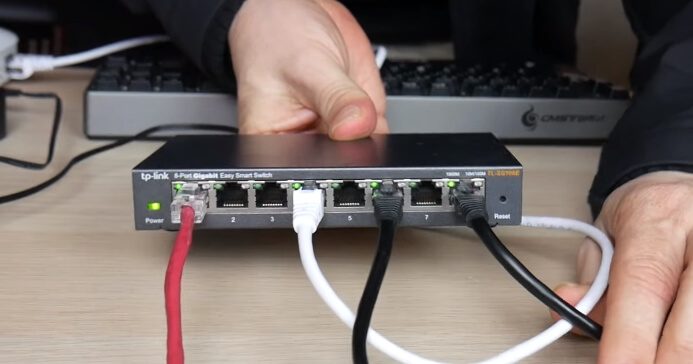
These switches allow the user to have complete control over their network, starting from allowing you to control what enters the network and whatnot. They include characteristics such as QoS and SNMP, and more. That’s not all; you can also use the managed switch to customize all Ethernet ports to improve data transmission performance.
Administrators can utilize instructions like broadband rate limitation and channel duplication to tune for maximum bit rate. Smart switches can also be managed switches (semi-managed switches). VLANs and other networking devices are frequently connected using smart switches.
VLANs allow you to segregate your system even further and manage the additional traffic for each connected device. Furthermore, managed switches are more costly than other types of switches.
Unmanaged Switches
Unlike managed switches, unmanaged switches usually do not require an operator. They are often connector systems that need little more than an Ethernet wire for setup.
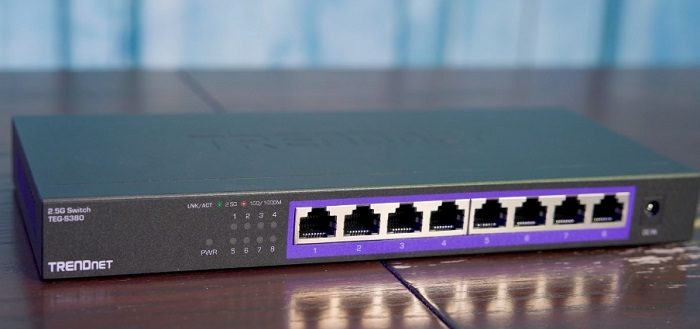
The most common uses for unmanaged switches are in small enterprises, offices, and even in-home networks. It enables networked devices, such as computers to computers or printers to printers in the same area, to connect with others.
The switch will automatically select the appropriate connection speed, changing from full-duplex to half-duplex mode. It’s straightforward to set up, and you can simply expand unmanaged switches with extra Ethernet connections.
LAN Switch
LAN switches or local area network switches are mostly used in companies to have an internal network for all the devices. It is also referred to as Ethernet or data switch. By allocating bandwidth efficiently, it prevents data packets from overlapping as they travel via a network.
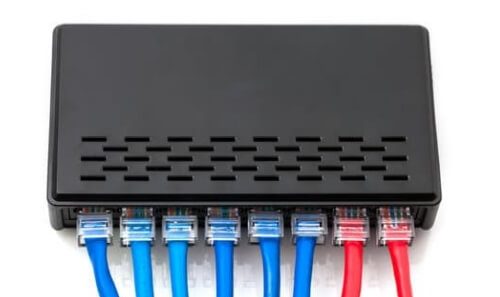
The LAN switch acts at the data link level. Internet protocol devices create packets that are then wrapped and sent inside an ethernet network.
Packaging occurs when bytes are attached forward and rear of data packets for conveying the data inside the IP packet via the network. By sending a packet of data solely to its intended receiver, these switches alleviate traffic load or bottlenecks.
PoE Switch
The power over Ethernet (PoE) switch distributes electricity over the network to multiple devices. The linked devices will be able to work even without a physical power source or router since the PoE switch transmits both information and electricity to all of the devices in the network.
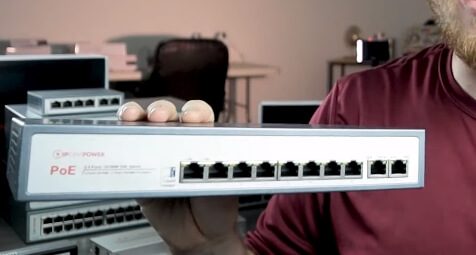
As a result, the cabling method is significantly simplified. You’ll have more flexibility with these networking switches, and you’ll never have to worry about running out of power while installing devices.
Stackable Switch
Stackable switches are frequently used when you need to control many switches, like 40-50 switches or even more. These switches simplify the process by allowing control of all the switches in a single setup.

A stackable switch consists of eight switches with a total of 384 ports that work together as a single unit. The ability to construct wireless mesh covering several devices in the stacking and define ACLs/QoS covering all devices are a few of the advantages of using these sorts of switches in networking.
Is There A Limit To The Number Of Devices You Can Connect?
You can theoretically connect an endless number of switches to your wireless network. In practice, however, this is not achievable. The number of network switches you can link up is determined by your router, which also grants authorization.
The number of IP addresses a router may assign is determined by the router’s range. As a result, this is the maximum number of devices you may join the system.
This subnet’s router has a fixed IP address that offers access to your home network to connect to the web. A primary router will have a subnet of 255.255.255.0 and may thus supply 254 IPs. So, the total number of devices that may join your system is 254.
You’ll need to adjust the subnet mask of your router’s local network to accommodate more devices. For example, if you choose /23, you’ll obtain 512 IP addresses with 510 useable IP addresses.
However, you will never require that many IP addresses for your home or local network, both theoretically and logically. Also, once you reach 99 IPs, most home routers will start showing some lags and connection issues.
What Are The Consequences Of Connecting Many Switches Together?
Daisy-chaining may hypothetically link a router with a large number of network switches. This technology for computer networking Daisy chaining is the process of connecting computers and network equipment one by one in order to connect multiple network switches to a router. However, it is not recommended.
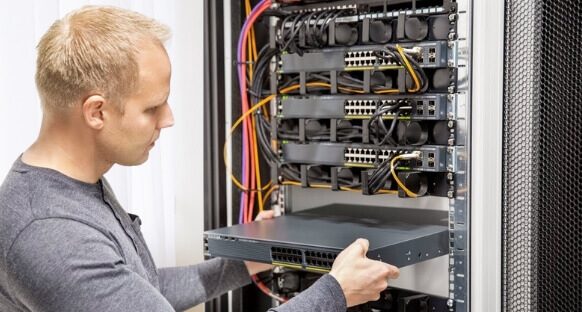
A crossover connection is required to transport data between older switches, and the switch has a specialized connector called the uplink port. We’ll need to use bridge cabling to link both ports.
Newer switches do not require a particular connection, and you are not limited. So you may daisy-chain the switches together in any port to establish the daisy chain.
Switch to switch connection. You can expand Ethernet ports for your needs. But, we do not recommend it as it is not safe since if a network switch is offline or there’s an internal problem, it won’t be able to interact with other switches, and you won’t be able to interact with your gadgets.
Furthermore, pandemonium ensues when there is a loop in the network. The whole network might come to a complete standstill. In a business context, where the danger of establishing a loop is considerably greater than in a residential network
Managed switches will be required to identify and shut down loops. Keep in mind that because managed switches are more expensive, you’ll have to pay more on loops.
How Many Network Switches Can Be Connected To A Router?
As we mentioned before, you can connect an unlimited number of switches on your router, but that depends highly on your router. We do not recommend connecting more than four switches on a single router for your home network.
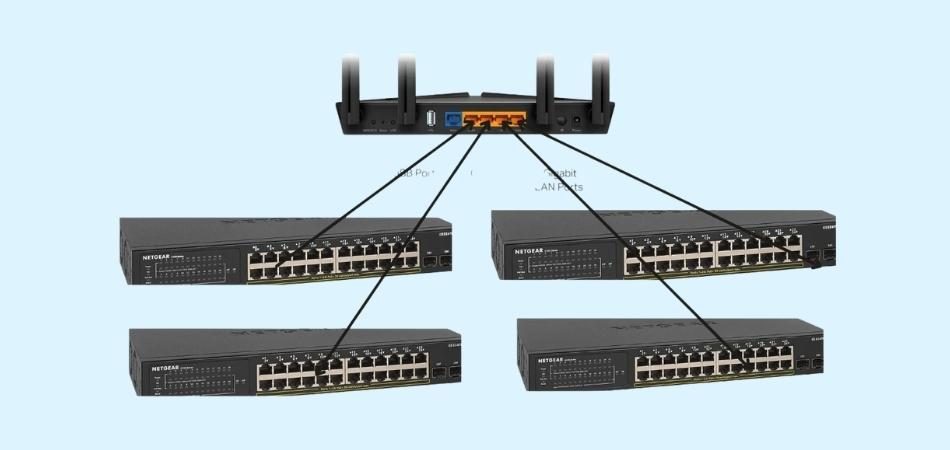
Our recommendation is to avoid daisy-chaining switches and instead link them to the router’s LAN port. On the other hand, you could buy a switch with adequate LAN ports. In the market, you will find many switches which offer up to 48 ports, and 48 ports should be more than enough for most networking areas.
Hence, rather than using several switches with limited ports, you should choose a single switch with plenty of ports so you do not have any problems adding more devices to your network if you need to.
Furthermore, your gadgets will always function properly, and you won’t have to worry about loops. Switches with 8, 16, 24, and 48 ports are readily accessible, depending on your devices.
Conclusion
By now, we believe you got the answer to the question of how many network switches can be connected to a router. Technically you can connect unlimited switches using daisy-chaining.
However, it becomes limited depending on the number of ports on your router. Link switches are not suggested since there is a great danger of establishing a network loop.
So, even if you want to connect many devices together, get a single switch with large ports to avoid any future problems.
